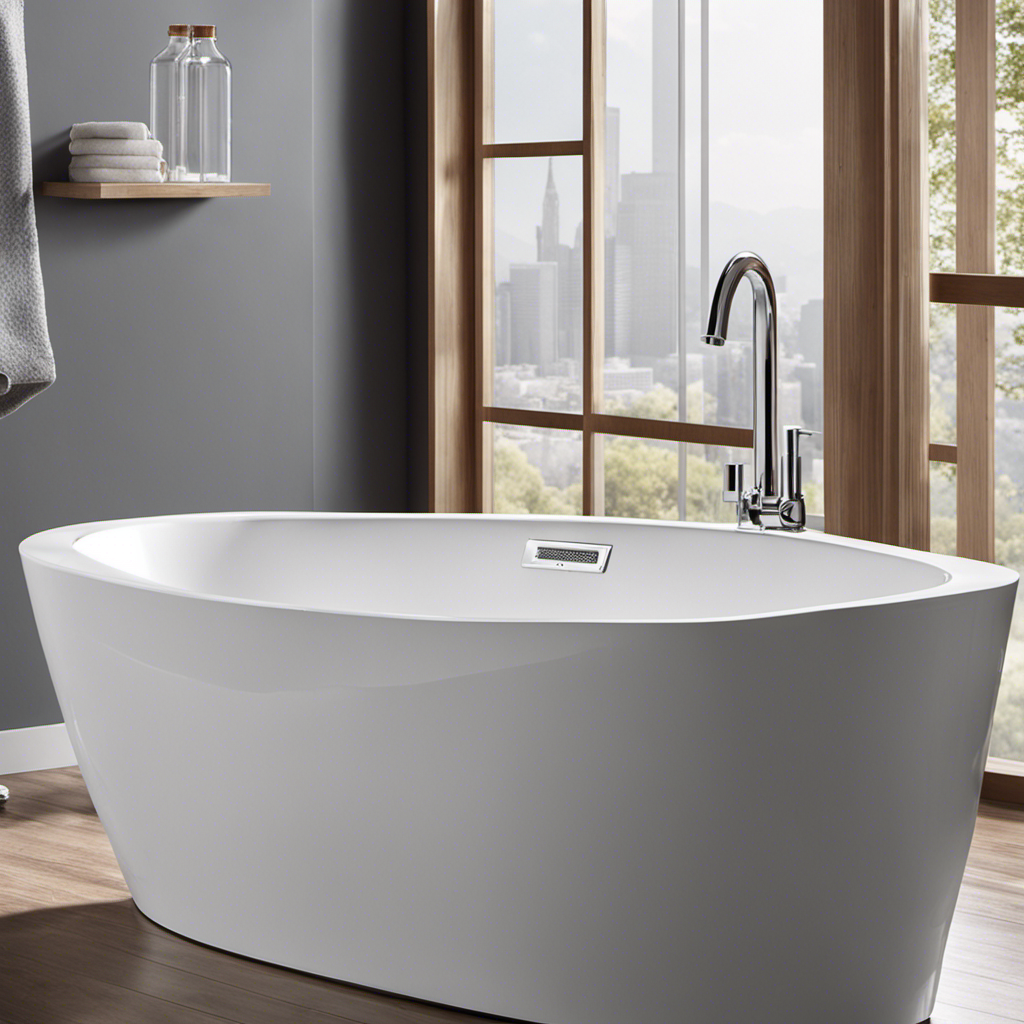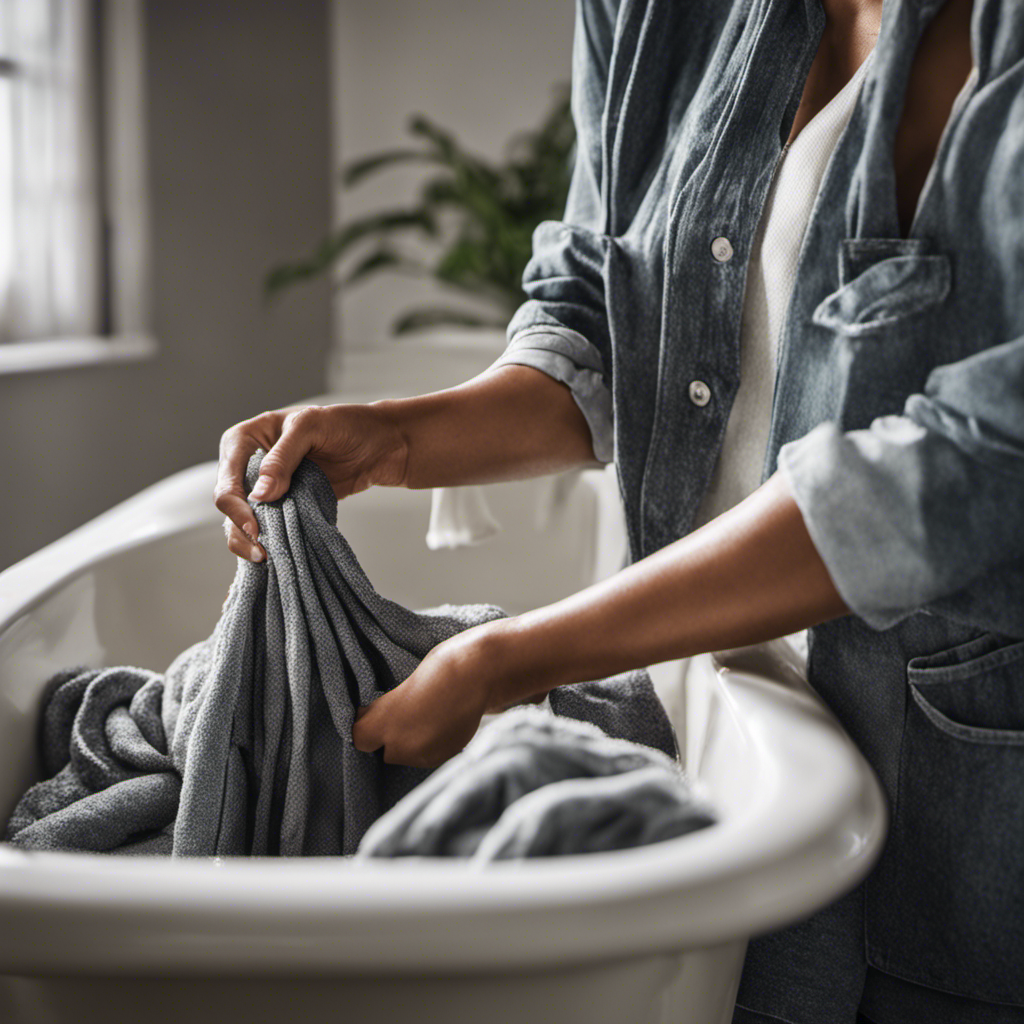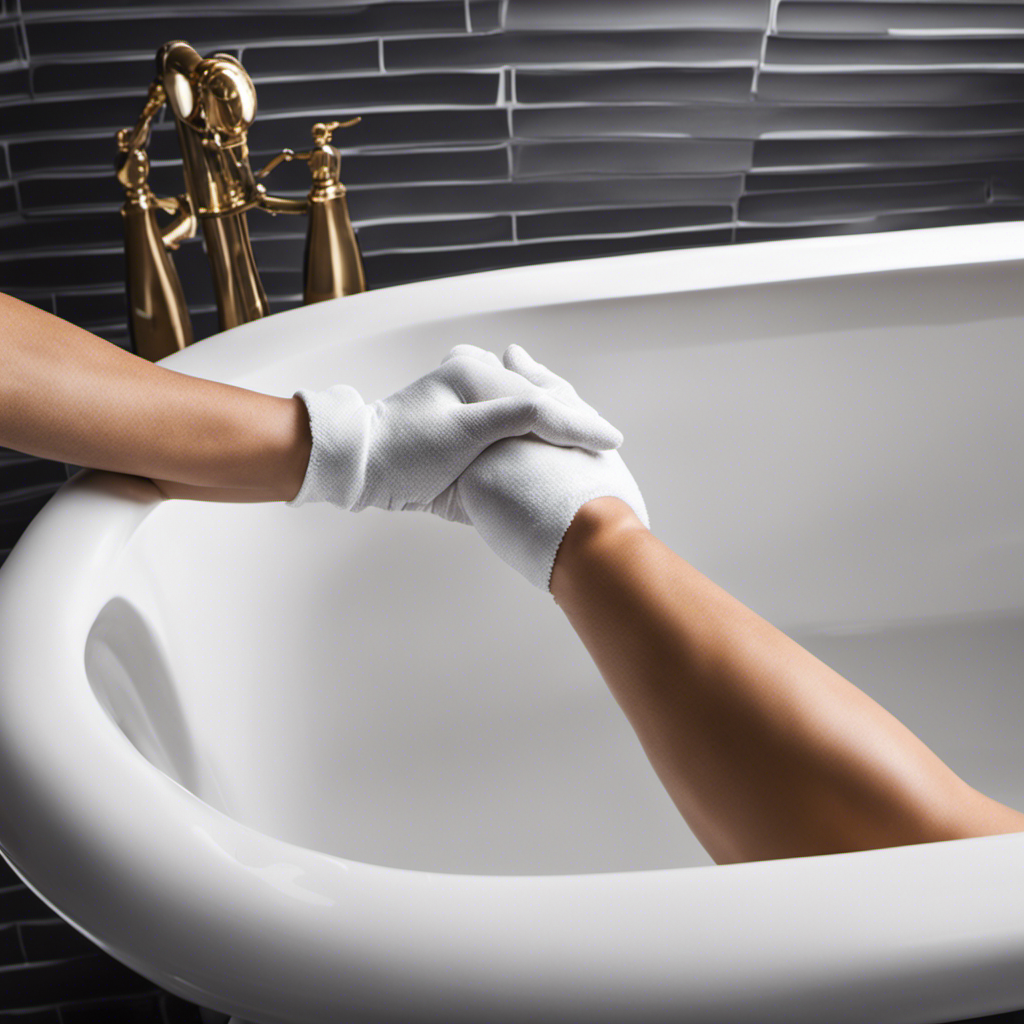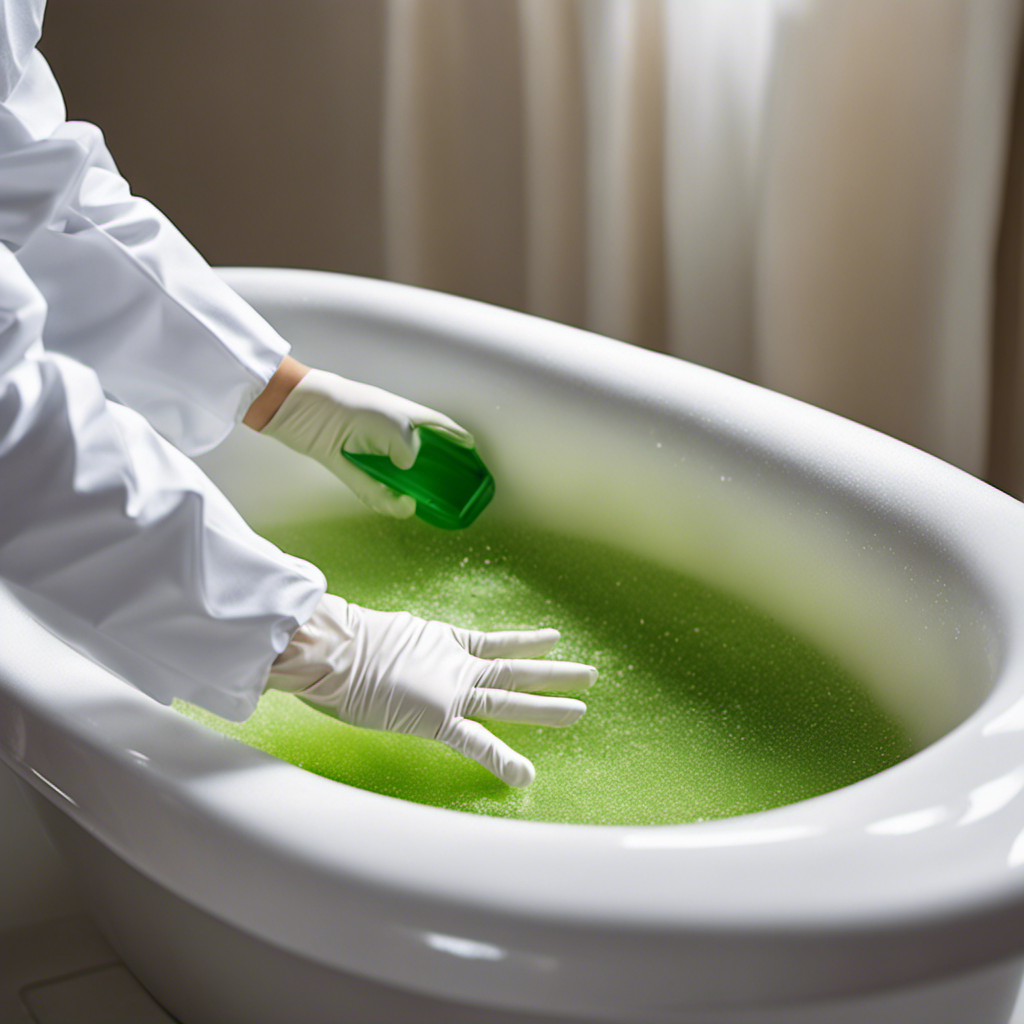I know what you’re thinking: with so many types of caulking on the market, how do I choose the right one for my bathtub? Don’t worry, I’ve got you covered.
In this article, I’ll provide you with the knowledge and information you need to make an informed decision. From the different types of caulking available to the factors you should consider, I’ll guide you through the process step-by-step.
Get ready to learn the best caulking brands and some tips and tricks for long-lasting bathtub caulking.
Let’s dive in!
Key Takeaways
- Silicone and acrylic are common types of caulking for bathtubs.
- Silicone caulk is durable, flexible, and resistant to mold and mildew.
- Acrylic caulk is easy to apply, dries quickly, and provides a watertight seal.
- Consider durability, flexibility, and resistance to water when choosing caulking for bathtubs.
Types of Caulking for Bathtubs
There are two common types of caulking for bathtubs: silicone and acrylic.
When it comes to reliable caulk options, both silicone and acrylic are great choices. Silicone caulk is known for its durability and flexibility, making it perfect for areas that experience frequent movement and moisture, such as bathtubs. It is also resistant to mold and mildew, ensuring a long-lasting seal.
On the other hand, acrylic caulk is easy to apply and dries quickly. It is a cost-effective option that provides a watertight seal.
When it comes to caulk removal methods, both silicone and acrylic can be removed using a caulk remover tool or a scraper. However, silicone caulk may require a bit more effort to remove completely.
Now that we have discussed the types of caulking available, let’s move on to the factors to consider when choosing caulking for bathtubs.
Factors to Consider When Choosing Caulking for Bathtubs
When choosing caulk for your tub, consider factors such as durability, flexibility, and resistance to water. These are crucial in ensuring a long-lasting and effective seal for your bathtub. To help you make the best choice, here are some common mistakes to avoid when caulking bathtubs:
-
Using the wrong type of caulk: Make sure to use a caulk specifically designed for bathroom use, as it’ll be more resistant to moisture and mold.
-
Not cleaning the surface properly: Before applying new caulk, remove any old caulk and thoroughly clean the area to ensure proper adhesion.
-
Applying too much caulk: A thin, even layer is all you need. Excessive caulk can lead to unsightly gaps and can be difficult to remove if necessary.
-
Not allowing enough drying time: Be patient and allow the caulk to fully cure before using the bathtub.
To remove old caulking from a bathtub, follow these steps:
-
Use a caulk removal tool or a utility knife to carefully cut away the old caulk.
-
Clean the area with a mildew remover to eliminate any mold or mildew.
-
Use a scraper or a brush to remove any remaining residue.
-
Finally, make sure to thoroughly dry the area before applying new caulk.
Best Caulking Brands for Bathtubs
To find the best caulk brand for your tub, you should consider factors such as durability, flexibility, and water resistance.
When it comes to caulking your bathtub, one of the most important considerations is choosing the right color. The best caulking color for bathtubs is usually white or clear, as these colors blend well with most bathroom tile and fixtures.
White caulking provides a clean and seamless look, while clear caulking allows the natural color of your bathtub to show through.
If you need to remove old bathtub caulk before applying a new one, there are a few methods you can try. One popular method is using a caulk removal tool or a putty knife to carefully scrape away the old caulk.
Another option is to use a caulk softener or a caulk remover gel, which can help to dissolve the old caulk, making it easier to remove.
Step-by-Step Guide to Caulking a Bathtub
Start by thoroughly cleaning the surface of your tub and removing any old caulk residue. This step is crucial to ensure proper adhesion of the new caulk.
Once the surface is clean, it’s time to apply the new caulk. Here are some caulking techniques to keep in mind:
- Use a caulk gun for precise application.
- Apply an even bead of caulk along the joint, making sure to fill any gaps.
- Smooth the caulk with a caulk smoothing tool or your finger for a professional finish.
- Wipe away any excess caulk with a damp cloth.
Avoid these common mistakes in bathtub caulking:
- Not cleaning the surface properly, leading to poor adhesion.
- Using the wrong type of caulk for your bathtub.
- Applying too much caulk, causing it to crack or peel.
- Not allowing enough drying time before using the tub.
With these techniques in mind, you’ll be able to achieve a long-lasting caulking job.
Now, let’s move on to some tips and tricks for maintaining your bathtub caulking.
Tips and Tricks for Long-Lasting Bathtub Caulking
Here are some tips and tricks to help you maintain the longevity of your bathtub caulk.
One of the most common mistakes to avoid when caulking a bathtub is not properly preparing the surface. Make sure to thoroughly clean and dry the area before applying the caulk to ensure a strong bond.
Additionally, using the wrong type of caulk can lead to premature deterioration. Choose a high-quality silicone caulk that is specifically designed for bathroom use.
To maintain and clean bathtub caulking for longevity, it’s important to regularly inspect for any signs of wear or damage. If you notice any cracks or gaps, it’s best to re-caulk as soon as possible to prevent moisture from seeping in.
Regularly cleaning the caulk with mild soap and water can also help prevent mold and mildew growth.
Conclusion
After considering all the factors and options, it is clear that choosing the right caulking for your bathtub is essential for a long-lasting and leak-free seal.
Taking into account the type of bathtub and the specific needs of your bathroom, you can confidently choose from reputable brands such as GE, DAP, or 3M.
By following a step-by-step guide and implementing some useful tips and tricks, you can ensure a professional-looking caulking job that will stand the test of time.
So, don’t let your bathtub be a leaky ship, seal it up with the right caulking and sail away to a watertight haven.










